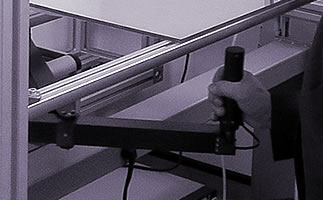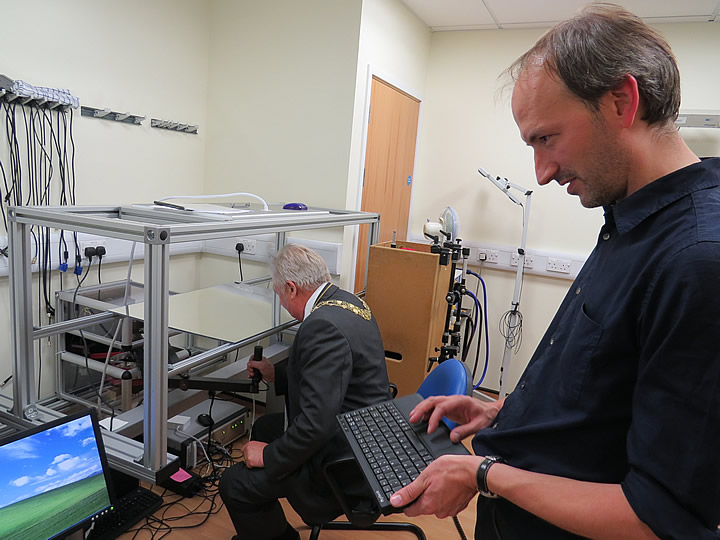Using robots to improve motor learning
We are interested in how the brain learns new motor skills and how movement disorders (such as Parkinson’s disease) impact on motor learning and the ability to retain motor memories.
 We have recently acquired a vBOt to help us explore the neural mechanisms of motor learning.
We have recently acquired a vBOt to help us explore the neural mechanisms of motor learning.
The use of robots to explore the neuroscience of human movement has increased rapidly over the last decade. The robots in question are not the humanoid robots of science fiction but a jointed arm that can move either in a two-dimensional plane or three-dimensional space. Just as computer generated visual stimuli have driven the visual neurosciences forward because they allow us to manipulate visual input to the brain, so too are robots beginning to push the boundaries of motor neuroscience by allowing us to instantaneously manipulate our physical interactions with the world.

The robot will be used to explore motor learning in healthy subjects and in people with movement disorders.
We also want to better understand how movement disorders - such as Parkinson's disease and cerebellar ataxia - impact motor learning
What will be the outcomes of this research?
Our investigations are intended to explore the basic principles of motor control and learning in the healthy brain. We also want to better understand how movement disorders - such as Parkinson's disease and cerebellar ataxia - impact motor learning.
People involved